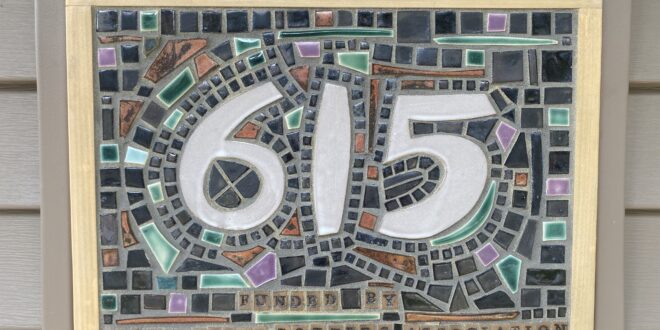By Piper Starnes
There’s a new home on West Ostrander Avenue in Syracuse’s Brighton neighborhood.
What was once an empty house, engulfed by overgrown trees and high grass, is now a charming, beige and pale green home with patio chairs and a multicolored, ceramic address plaque.
A Tiny Home for Good, founded by Andrew Lunetta, has built 25 homes in Syracuse to help individuals facing homelessness. Number 26 is different.
It has lowered porches and widened doorways. The 1,000-square-foot house provides an accessible entry for anyone who might call this small but welcoming place home.
Behind the stained-glass front door is a furnished two-bedroom, one-and-a-half-bathroom space, laundry room and full-sized kitchen decked out with an assortment of repurposed cabinets.
This is the organization’s first home designed and built with a person with disabilities and their caregiver in mind. After seven months of construction, the house is now complete and ready for its new residents to occupy this September.
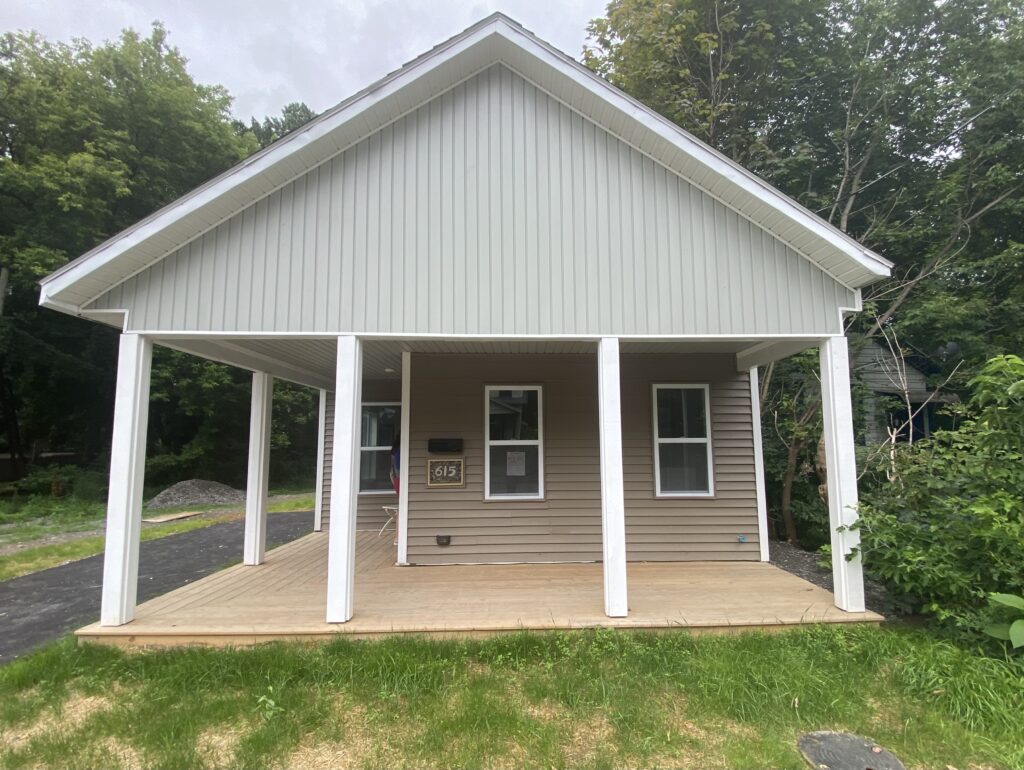
In the past year, the number of people facing homelessness nearly doubled in Onondaga, Oswego and Cayuga counties, according to the Housing and Homeless Coalition of Central New York. Its data also showed that some groups are hit harder than others.
“Certainly those who have disabilities, whether physical or mental health challenges, have a significantly harder time in the shelter system or outside than those who don’t,” Lunetta said. “And oftentimes, a shelter isn’t going to allow a caregiver to be there and live with them.”
Since 2016, A Tiny Home for Good has provided housing for its tenants, following a one-person-per-home policy. This is to instill a sense of pride in home-renters and avoid forced, incompatible roommates, such as in shelters or group homes, according to the organization.
However, in December 2021, A Tiny Home for Good decided to stretch the rules. Lunetta and his team acquired a 4,000-square-foot lot from the Greater Syracuse Land Bank on West Ostrander Avenue, an area zoned for single-family residences.
“It would have been hard to justify building one tiny home for one person on this particular vacant lot,” Lunetta said. With more square footage to work with, it became an opportunity to build a tiny home for two.
It’s unclear, as of this week, who will move in.
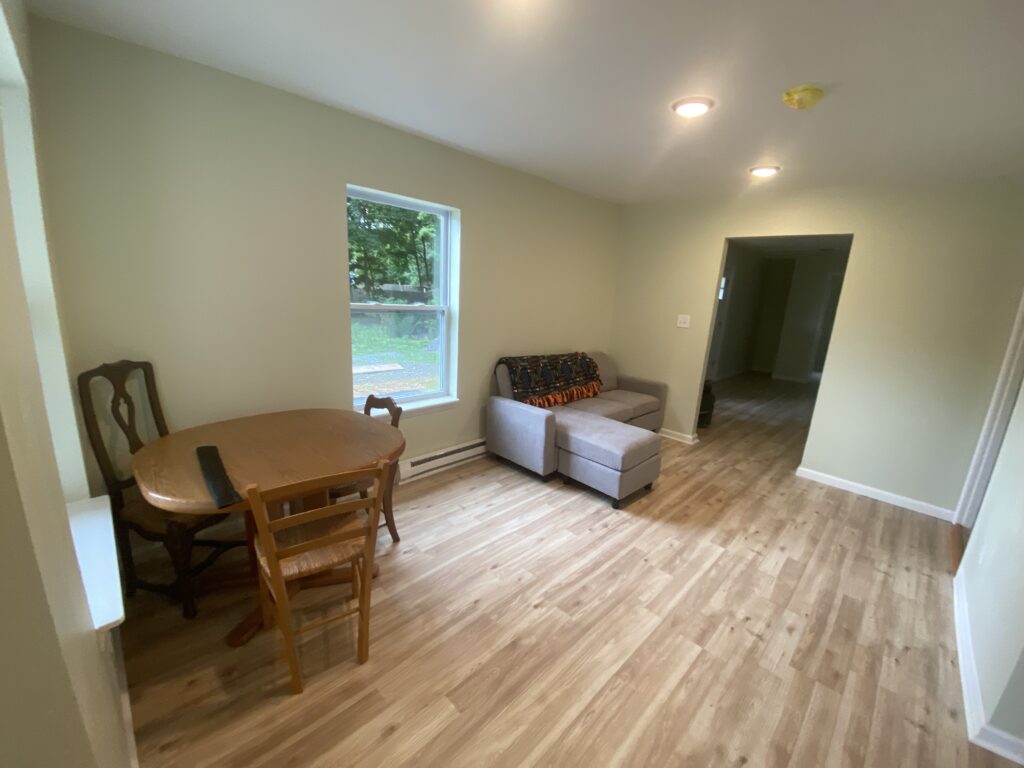
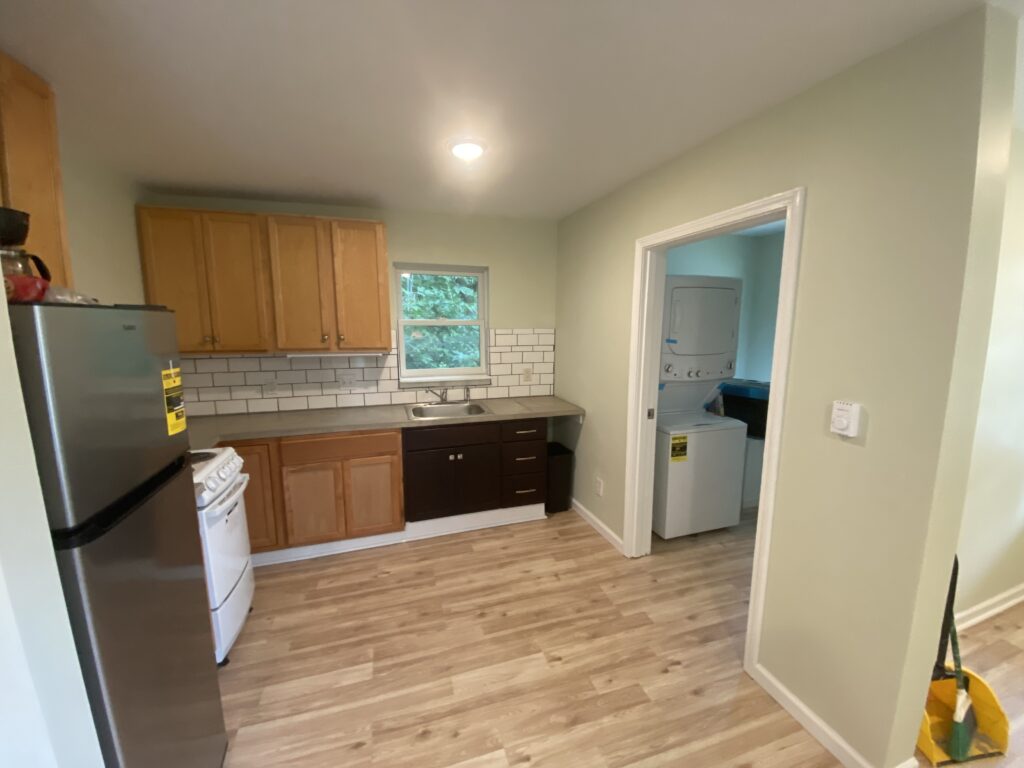
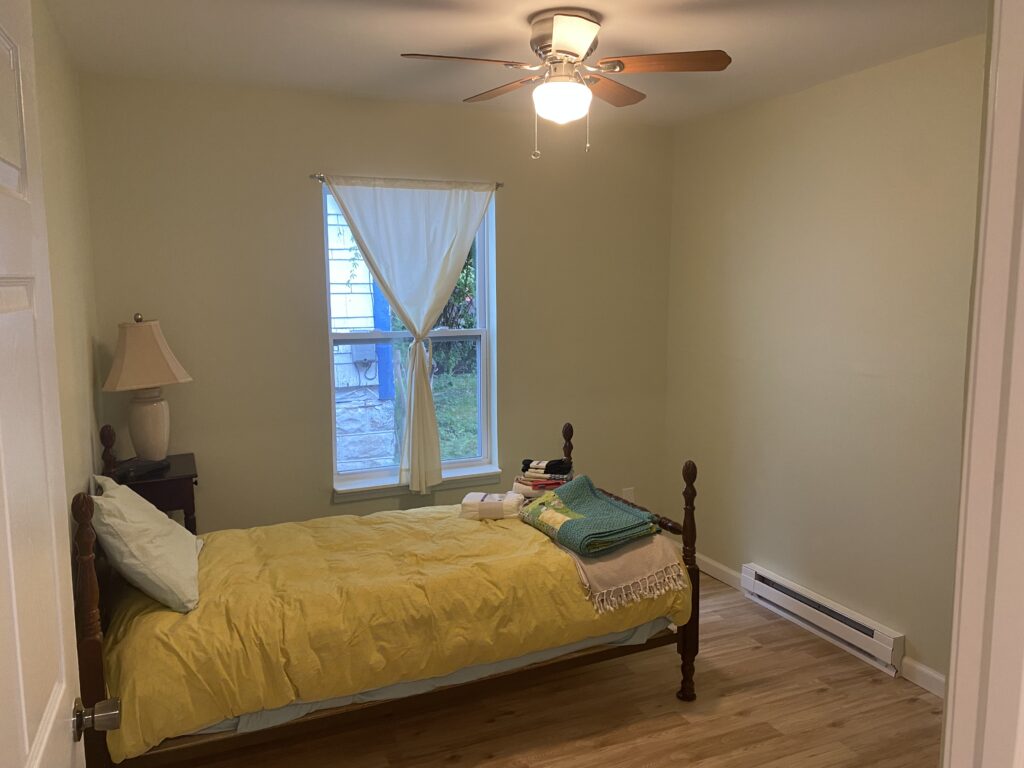
While working with case management partners, A Tiny Home for Good is hoping to select an unhoused small family or individual requiring a caregiver or visiting nurse.
Katie Weaver, A Tiny Home for Good’s director of development, said the goal is to meet the needs and safety of whoever may live in the home.
“It could be somebody who’s severely mentally handicapped and needs a live-in caregiver,” she said. “Or, if it’s someone who has a wheelchair, then we would add a ramp outside so that the porches are accessible.”
Site supervisor James Sevigny widened the doorways and lowered things like the porch, bathtub and countertops to make the property accessible for potential tenants. The kitchen’s mismatched cabinets of black and browns were also repurposed from old materials to maintain quality and affordability.
Typically, A Tiny Home for Good’s projects cost around $60,000 for each 300-square-foot unit. But, for a “tiny home” nearly three times that size, it was closer to $70,000, Weaver said.
Throughout the development process, A Tiny Home for Good welcomed support from volunteers and organizations in the community. From 2018 to 2020, Independent Potters’ Association of Central New York raised over $27,000 for the West Ostrander home, according to its Cups for a Cause fundraising page. One member even created the house’s green, orange and purple address number plaque, marking “615.”
By keeping its tenants off the streets and out of shelters, Lunetta said A Tiny Home for Good also relieves some strain on social services funded by taxpayers and the government. He said the Housing and Homeless Coalition oversees a database with information and a ranked list of individuals and households utilizing homeless service providers in Syracuse.
“By compiling all that data, they can really identify who’s using the most services —ultimately, who’s costing the county the most amount of money,” he said.
Syracuse University Maxwell School found, on average, A Tiny Home for Good saves Onondaga County $117,694 per tenant. Those savings are based on fewer ambulance rides to the emergency room and overnight stays in the hospital or jail.
Many tenants struggle with mental health and substance abuse problems that make it harder to maintain their living environment, Weaver explained. “But I feel like our houses and the fact that we have support services on staff provide a lot of stability that these people wouldn’t have had otherwise,” she said.
She said some tenants have been able to get a job, volunteer in the community and regain a sense of their humanity.
Lunetta added that A Tiny Home for Good has long-term plans to expand its 12 upcoming projects to include more than just traditional tiny homes for those in need. Construction has begun on four energy-efficient tiny homes with solar panels. And the organization has its sights set on renovating larger abandoned homes and run-down apartment buildings.
“I see this two-bedroom Ostrander home as a gateway towards that,” Lunetta said. “Our real goal is to provide housing permanently for the tenants who are in our places. They can stay for as long as they want.”
Piper Starnes is a music and culture writer in the Arts Journalism and Communications program at Syracuse University’s S.I. Newhouse School of Public Communications
 The Stand
The Stand

